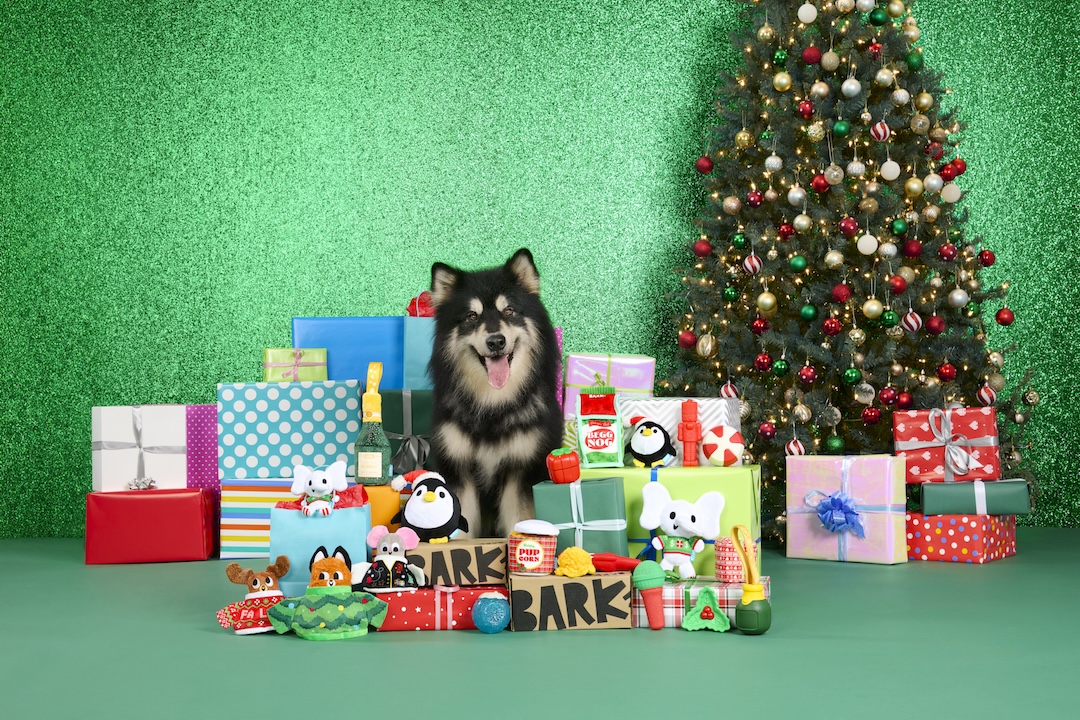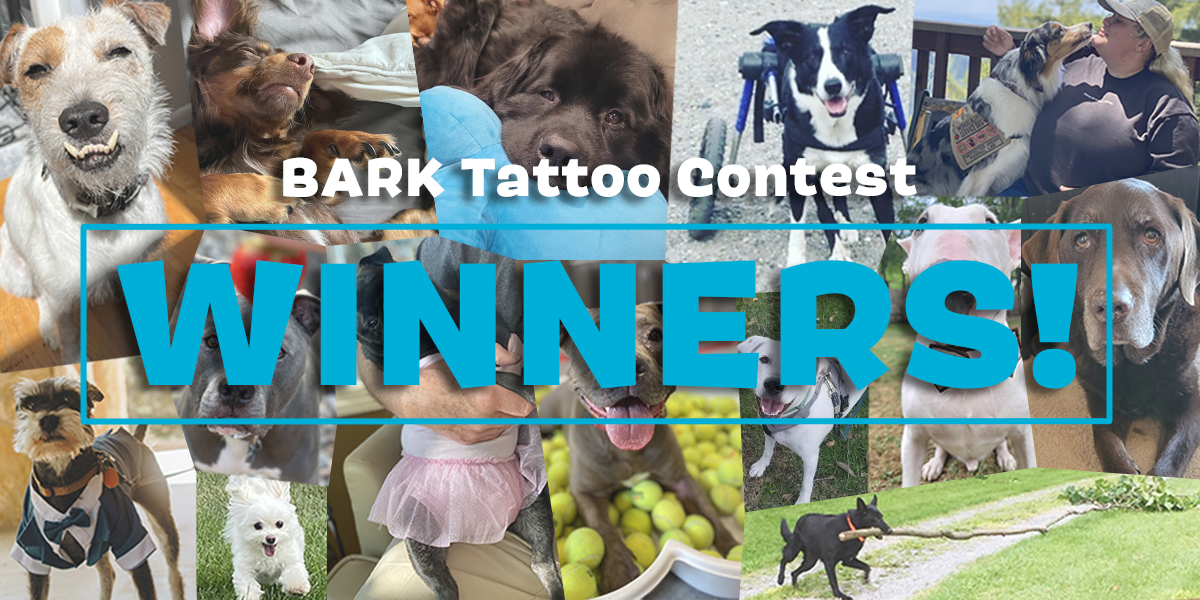For Pups With Short Attention Spans…
Labrador retrievers shed more than the average dog. And as one of the most popular dog breeds, there are countless homes currently covered in dog hair from these loveable dogs. Labs are going to need regular brushing and grooming if you want a coat of hair remaining firmly on your dog and not your furniture.
The quintessential man’s best friend, the Labrador retriever is one of the most popular dog breeds in the United States.1 But that’s probably no surprise to you if you’ve ever had the pleasure of meeting one of these pups.
Labs are affable, happy, and full of energy, prepared to chase a tennis ball or play a game of tug-of-war at a moment’s notice. But do Labs shed?
Yep, they sure do. Fun lab fact: Labs shed a bit more than the average dog, meaning that you should brush them at least once a week.2 Spring and fall are the Labrador shedding seasons, when they shed dog hair more and might need daily grooming.3
Being the dedicated dog parent (or future dog owner) that you are, you probably want to know more. Keep reading for 5 grooming tips to keep dog hair at bay and your Lab at play.
5 Labrador Retriever Grooming Tips
These jolly giants have a thick, water-resistant double coat,,2 meaning they only need baths occasionally.1 Pretty simple compared to some of the more frequently bathed breeds (we’re looking at you, Huskies).
Of course, those are just the basics. To help curb the effects of Labrador shedding and keep your Lab’s coat shiny and healthy, we’ll explore 5 grooming tips for this breed:
- Brush them frequently
- Make time for mani-pedis
- Prioritize a healthy diet
- Teach them to love grooming
- Practice health checks
#1 Brush Your Lab Frequently
Like most heavy shedding dogs, a Labrador retriever can benefit from regular brushing to collect excess dog hair (keeping it off of couches, floors, and furniture).
You can opt to take your furry pal to the groomer for special treatment, but it’s easy to brush your black lab at home, too. As we mentioned, Labs tend to shed more loose hair in the spring and fall, while their coats are turning over the new proverbial leaf. During these seasons, plan on brushing your dog’s coat every other day. In the summer and winter, you can reduce brushing to once a week.6
Brushing your black Lab doesn’t only save you from hours of vacuuming and dead hair-tumbleweed monsters lurking in the night. It also keeps your dog’s fur healthy by distributing the natural oils, much like our own locks, across their coat.
So now that you know the answer to the question: “do labs shed?”, break out that wide-toothed comb or fur-catcher of choice and give your pup a satisfying scratch that benefits the entire family.


#2 Make Time for Mani-Pedis
While you’re at it, add a manicure and pedicure to your dog’s spa tab and give him the full treatment. Trimming your yellow lab’s nails frequently can help her stay healthy and free from pain and injury. Shorter nails also serve her better for scratching, walking, and playing.1
Regular nail trims can help prevent:5
- Pain – In addition to longer nails being more susceptible to breakage, portions of their nails become more sensitive as they grow longer. The longer they grow, the more sensitive they become to feeling pain.
- Injury – As nails become too long, they can curl and change your yellow lab’s gait and posture. This can damage their ligaments and joints and make them uncomfortable as they walk, run, and catch the ball you threw across the yard.
Labrador health issues are common, like elbow and hip dysplasia, so it’s important to prevent injuries as much as possible.1 Nail trimming is an easy, proactive way to keep your dog healthy. Moral of the story? Schedule mani-pedis with your dog once or twice each month.7 You’ll both be happier for it.
Need a more comprehensive guide on how to cut your dog’s nails the right way? We’ve got you covered.
#3 Prioritize a Healthy Diet
No surprises here that dogs, like humans, benefit from a healthy diet of high-quality, nutritious food. A balanced diet is also the key to keeping your lab’s inner coat and outer coat shiny and the skin underneath healthy.
Look for dog food with essential fatty acids, including:8
- Omega-3
- Omega-6
While nutritional deficiencies aren’t common in dogs eating high-quality commercial dog food, signs that your pup might not be getting enough nutrition in their diet may include:8
- Dandruff
- Skin lesions
- Coarse, dry hair
- Dull coat
Whether these coat and hair loss problems are caused by a nutritional deficiency or just a behavior like excessive scratching, supplements can help. Omega-6 supplements are available, or you can use sunflower oil or safflower oil. For Omega-3s, you can use flaxseed oil or fish oil.8
Supplement your Lab’s diet with healthy nutrients like:8
- Glucosamine
- Chondroitin
- Vitamin C
- Vitamin E
- Selenium
- L-Caritine
Being mindful of your dog’s diet is especially important for breeds like a golden retriever or a Labrador retriever that are prone to certain health issues.2 For high-quality, nutrient-rich food specifically formulated for your pup, try BARK food for Labs.
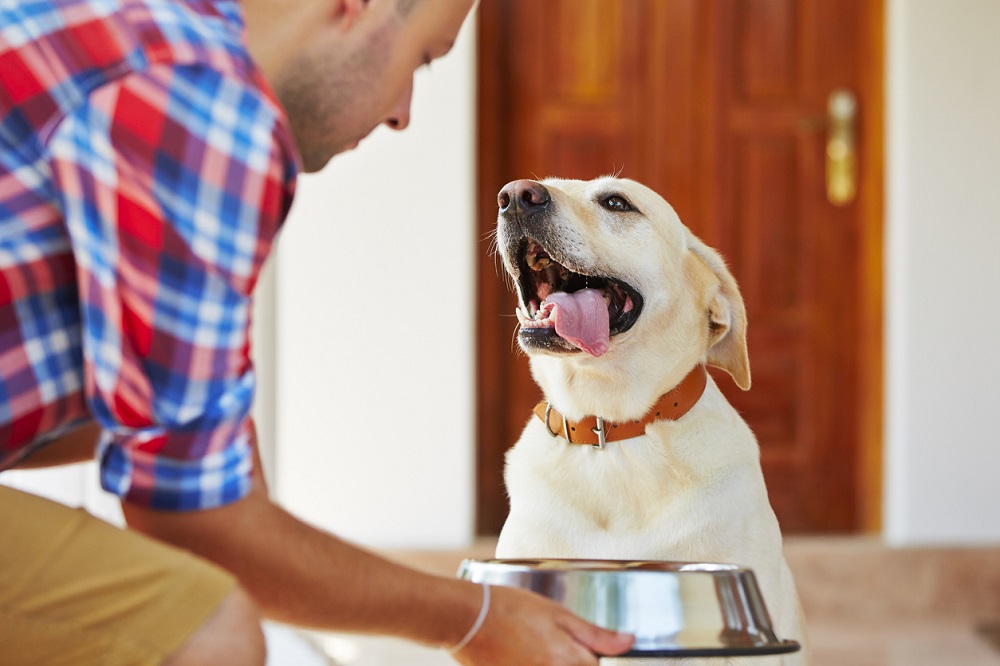

#4 Teach Them to Love Grooming
How do you feel about self-care as a dog owner? Does the idea of a hot bath with a face mask and relaxing music fill you with unparalleled serenity? (We’re with you.)
Your pup should feel the same about its pampering routine. Naturally, some aspects like nail trims and toothbrushing might seem stressful, but with your help, your lab will learn to love their brushing and grooming rituals.
Zookeepers use the term “husbandry training” to describe how they utilize positive reinforcement to teach animals to participate in their own care. The American Kennel Club has several fantastic tips and tricks you can use at home, including:9
- Teach your dog to be comfortable with you – Your dog should be comfortable with you touching them to provide a positive grooming experience. When your Lab is a puppy, start introducing pets slowly and gently until they’re acclimated and comfortable. And, of course, make sure to praise them and offer lots of treats.
- Give your dog the power of choice – Even though much of the time, your fur baby will choose to be around you 24/7, you can also give him choices of his own. In grooming, empower choice with treats like peanut butter. While they lick their treat, groom them, but if they walk away, stop and don’t resume unless they return to their treat. This teaches your dog that not only is grooming an activity in which they’re rewarded, but they also have the choice to stop.
- Reward them after grooming – Speaking of positive reinforcement, you can reward your lab for a grooming session well done by treating her to her favorite activity after you’ve brushed, bathed, or nail-trimmed. Does she adore the park? Embark over to her favorite grassy plain with several tennis balls in hand (or, rather, in mouth). Or, if your lab prefers to snuggle on the couch, treat her to lots of fluffy blankets and rest (which will now be much less hairy, thanks to your trusty brush).
Practice makes perfect, and each of these three training tips empowers both you and your dog to make their health and wellness routine less stressful and more rewarding.
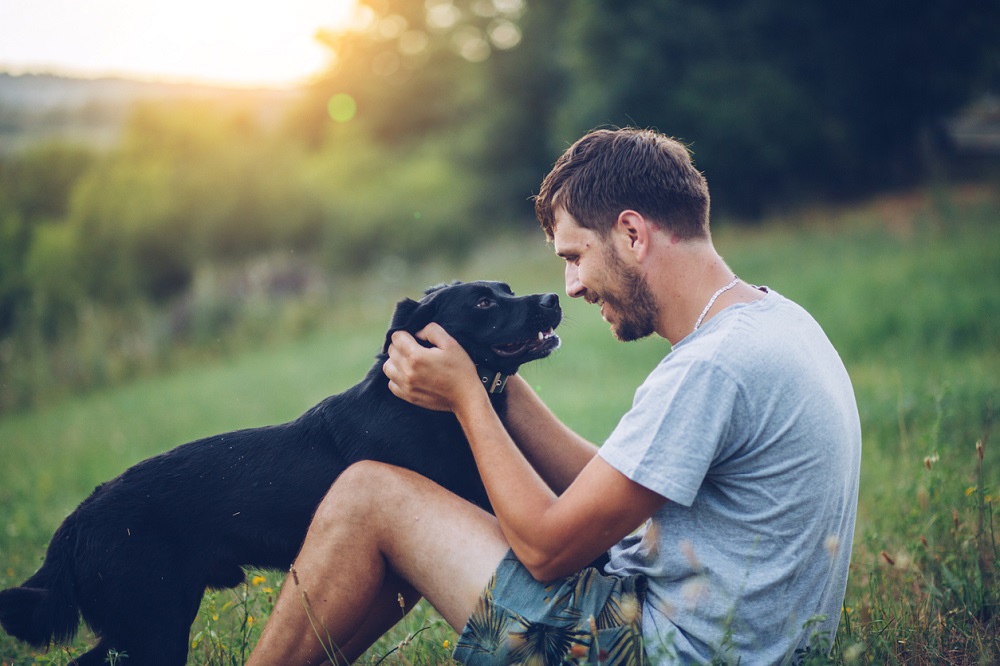

#5 Keep Up with Health Checks
Along with maintaining a frequent brushing schedule and a caring grooming regimen, regular health checks will keep your lab bouncing with joy. Keep an eye on particular areas that are prone to injury in Labrador retrievers on a regular basis.
Labs as a dog breed are prone to certain health conditions including:1
- Eye problems like progressive retinal atrophy
- Life-threatening stomach bloat
- Heart disease
- Elbow and hip dysplasia
In addition to regular vet appointments, you can add at-home checkups and examine the following areas:10
- Eyes – Their eyes should be white and clear, with pupils the same size. They should also be moist without discharge or swelling.
- Nose – Their nose shouldn’t be running or dry and cracked. It also shouldn’t change colors.
- Ears – Their ears shouldn’t have a smell or physical changes like redness, debris, sores, or drainage.
- Mouth – Their gums should be pink and smooth, and their teeth should be white. Their breath shouldn’t have a significantly bad smell.
- Body – Their body shouldn’t have any bumps or swelling. You can also check for fleas, ticks, and other skin concerns while you massage and check for lumps.
- Back – Their spine shouldn’t cause them pain when you firmly run your hand along it.
- Heart – Their heartbeat and breaths should be smooth and steady.
- Paws – Their paws shouldn’t have swelling, redness, tearing, or an odor.
A fail-safe way to inspect your dog’s health is by viewing their overall behavior. Are they happy? Are they eating their food normally and using the bathroom? Are they responding like they always do when you call their name?
To learn more about specific health issues that labs face, check out our full Labrador retriever breed guide.
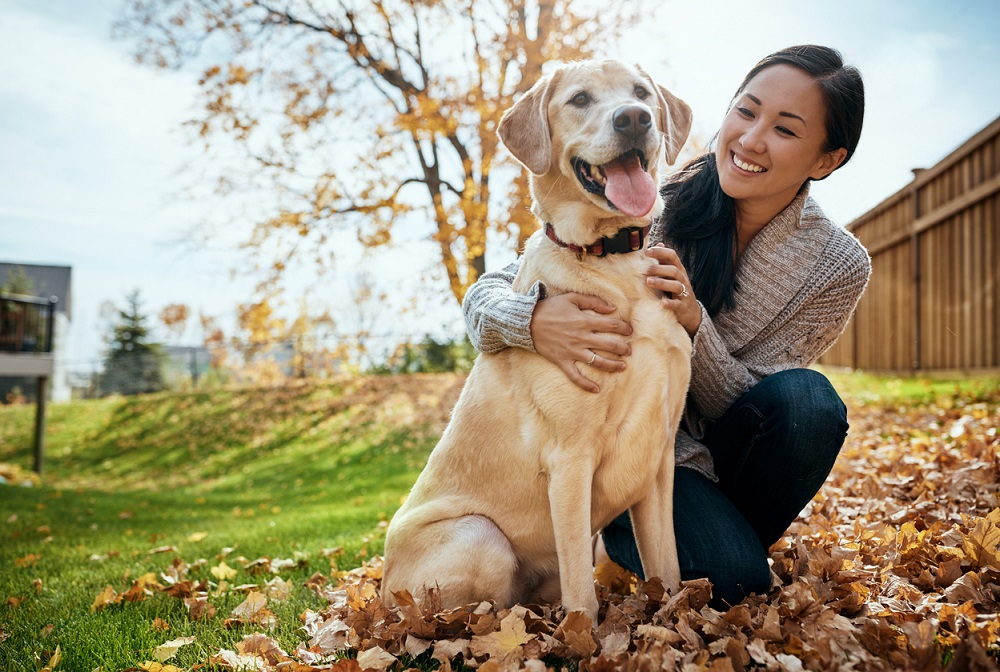

Help Your Lab Grow their Shiniest Coat with BARK
The Labrador retriever is certainly a dog to bark home about. With their high-energy, friendly personality, they’ll likely continue to be one of the most popular breeds around. While they do shed more than some other breeds, scheduling a regular brushing and grooming routine and maintaining their overall health will keep their coat shiny and clean.
To give your lab the nutrients they need to grow their healthiest coat, turn to BARK food for labs. BARK Food is optimized by breed to deliver the nutrients they need to thrive. Make the switch and see the difference in their coat, behavior, and smile for yourself today.
Sources:
- American Kennel Club. Labrador Retriever. https://www.akc.org/dog-breeds/labrador-retriever/
- VCA Animal Hospitals. Labrador Retriever. https://vcahospitals.com/know-your-pet/dog-breeds/labrador-retriever
- Britannica. Labrador Retriever. https://www.britannica.com/animal/Labrador-retriever
- BARK Post. How To Brush Your Dog’s Teeth. https://post.bark.co/health/how-to-brush-your-dogs-teeth/
- BARK Post. How To Cut Your Dog’s Nails The Right Way. https://post.bark.co/health/how-to-cut-dog-nails/
- American Kennel Club. How to Groom a Labrador Retriever. https://www.akc.org/expert-advice/health/how-to-groom-a-labrador-retriever/
- The Kennel Club. Long claws. https://www.thekennelclub.org.uk/health-and-dog-care/health/health-and-care/a-z-of-health-and-care-issues/long-claws/
- Fetch by WebMD. Dog Nutrition for a Healthy Coat. https://pets.webmd.com/dogs/features/dog-nutrition-for-a-healthy-coat
- American Kennel Club. Teach Your Dog to Enjoy Grooming. https://www.akc.org/expert-advice/health/teaching-your-dog-cooperative-grooming-skills/
- VCA Hospitals. Giving Your Dog a Thorough Home Check-up. https://vcahospitals.com/know-your-pet/giving-your-dog-a-thorough-home-check-up


